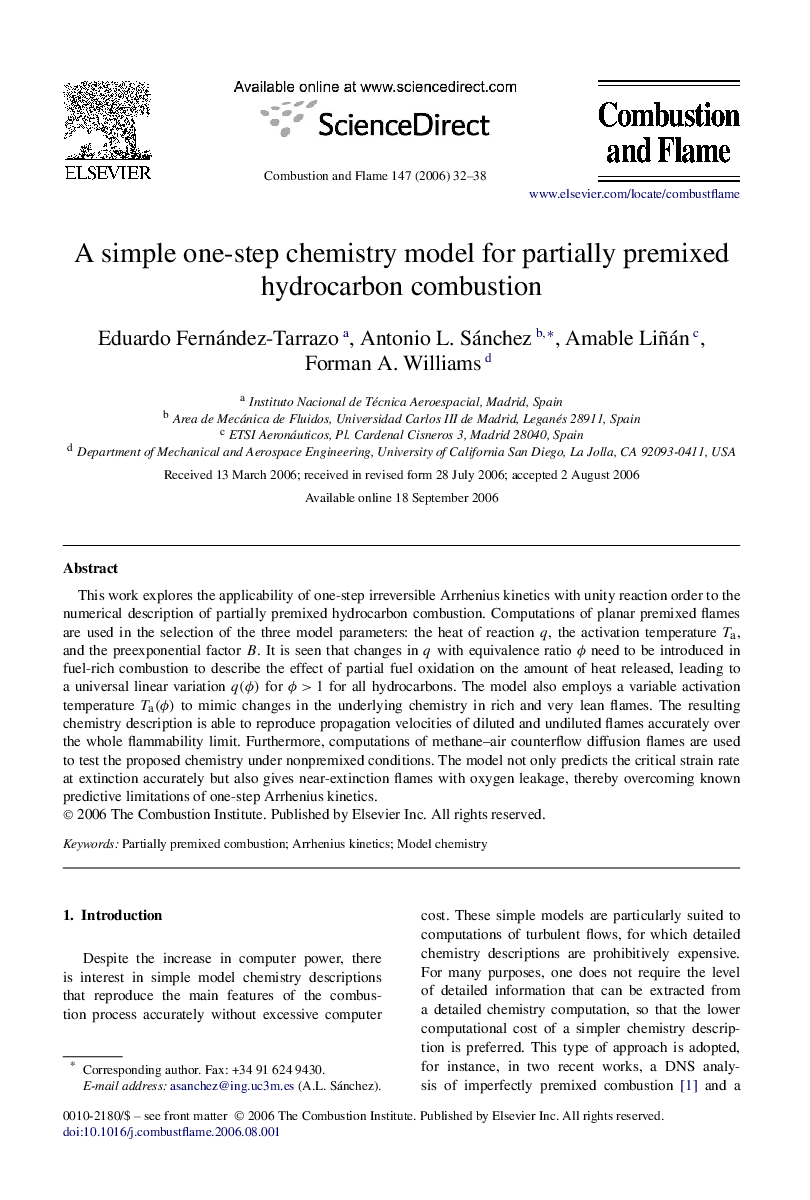| Article ID | Journal | Published Year | Pages | File Type |
|---|---|---|---|---|
| 169846 | Combustion and Flame | 2006 | 7 Pages |
This work explores the applicability of one-step irreversible Arrhenius kinetics with unity reaction order to the numerical description of partially premixed hydrocarbon combustion. Computations of planar premixed flames are used in the selection of the three model parameters: the heat of reaction q , the activation temperature TaTa, and the preexponential factor B. It is seen that changes in q with equivalence ratio ϕ need to be introduced in fuel-rich combustion to describe the effect of partial fuel oxidation on the amount of heat released, leading to a universal linear variation q(ϕ)q(ϕ) for ϕ>1ϕ>1 for all hydrocarbons. The model also employs a variable activation temperature Ta(ϕ)Ta(ϕ) to mimic changes in the underlying chemistry in rich and very lean flames. The resulting chemistry description is able to reproduce propagation velocities of diluted and undiluted flames accurately over the whole flammability limit. Furthermore, computations of methane–air counterflow diffusion flames are used to test the proposed chemistry under nonpremixed conditions. The model not only predicts the critical strain rate at extinction accurately but also gives near-extinction flames with oxygen leakage, thereby overcoming known predictive limitations of one-step Arrhenius kinetics.
